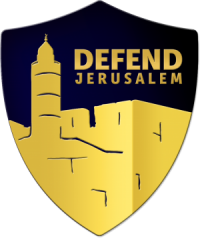What Divides Us and What Makes Us Standout Together
In the aftermath of the political indecision that followed Israel’s fourth elections in less than three years, the popular and sometimes funny television satire show Eretz Nehederet, or “Wonderful Country,” ran a skit where a couple interviewed for a reality TV-like setting spoke about who they voted for. The man, opinionated as anyone, offers the out-of-the-blue suggestion that a civil war would be the best solution for the country’s unsolvable political hubris. He goes on to highlight all the divisions inside Israel—and there are many: political, religious, economic, etc. Israel, after all, is like so many other democracies where people’s rights are not only protected but are also expressed. But the skit was a comedy, and Israel isn’t defined by what separates its citizens but rather by what unites them in times of peril and sorrow.
On April 29, the Israel National Police estimated that over 100,000 worshippers, primarily orthodox and ultra-orthodox Jews, had traveled to Mt. Meron, near the Sea of Galilee and the city of Safed, to attend the annual Lag Ba’Omer celebrations near the grave of second-century sage Rabbi Shimon Bar-Yochai. The holiday is a cherished date on the Jewish calendar, a symbolic salute to the revolt of Bar-Kochba against the Romans; the celebrations are marked by the burning of bonfires, dancing, and prayers, and the holiday is one that children wait for with great anticipation all year long. Because last year’s celebrations were canceled as a result of the pandemic, the crowds for this year’s festivities promised to be larger than ever.
But the long night of celebration turned into an unthinkable tragedy. As the crowds began to leave the area, several worshippers, according to initial reports, lost their footing on a narrow aluminum gangway leading to steps that was made slippery by spilled water and juice. People began to fall on top of one another. The unstoppable human wave created a stampede of crushed limbs and lost lives. The immense force of so many people collapsing on one another ignited a lethal storm that was swift and unforgiving. It was dark and the cries of those wounded and others searching for loved ones exacerbated the confusion.
First responders rushed into the area—their efforts to reach the epicenter of suffering made so much more difficult by the throng of people desperately trying to flee the area. Unit 669, the elite Israel Air Force (IAF) pararescue unit, was flown to the area to medevac the wounded to hospital triage centers. By dawn, Israelis awoke to unthinkable breaking news: 45 people were killed and hundreds more were critically injured.
Great friction exists between Israel’s secular and religious communities over political and social issues. This fraught relationship was made much worse by Covid. But the Israeli public couldn’t care about the political differences at this moment of heartbreaking sorrow. There were no differences between anyone that morning—only the common thread of pain for those lost and a national determination to do whatever could be done on behalf of the living.
In secular Tel Aviv, blood donation centers were operational within hours; the lines of citizens of all walks of life and whose religious beliefs range from pious to not-at-all stood patiently in the Mediterranean sun to roll up their sleeves. Druze families who live near Mt. Meron opened their homes to those impacted by the disaster—those who were wounded, those who rendered aid, and those desperately looking for missing loved ones. Arab villages in Galilee opened food tents to aid those who were hurt and those who were involved in the emergency response. Prayers were offered in mosques, churches, and synagogues. The tragedy brought together a sense of collective pain and the need for a national day of mourning.
Israelis revel in their differences, but they excel like no other nation in coming together to show that no matter what divides them, they are one.
